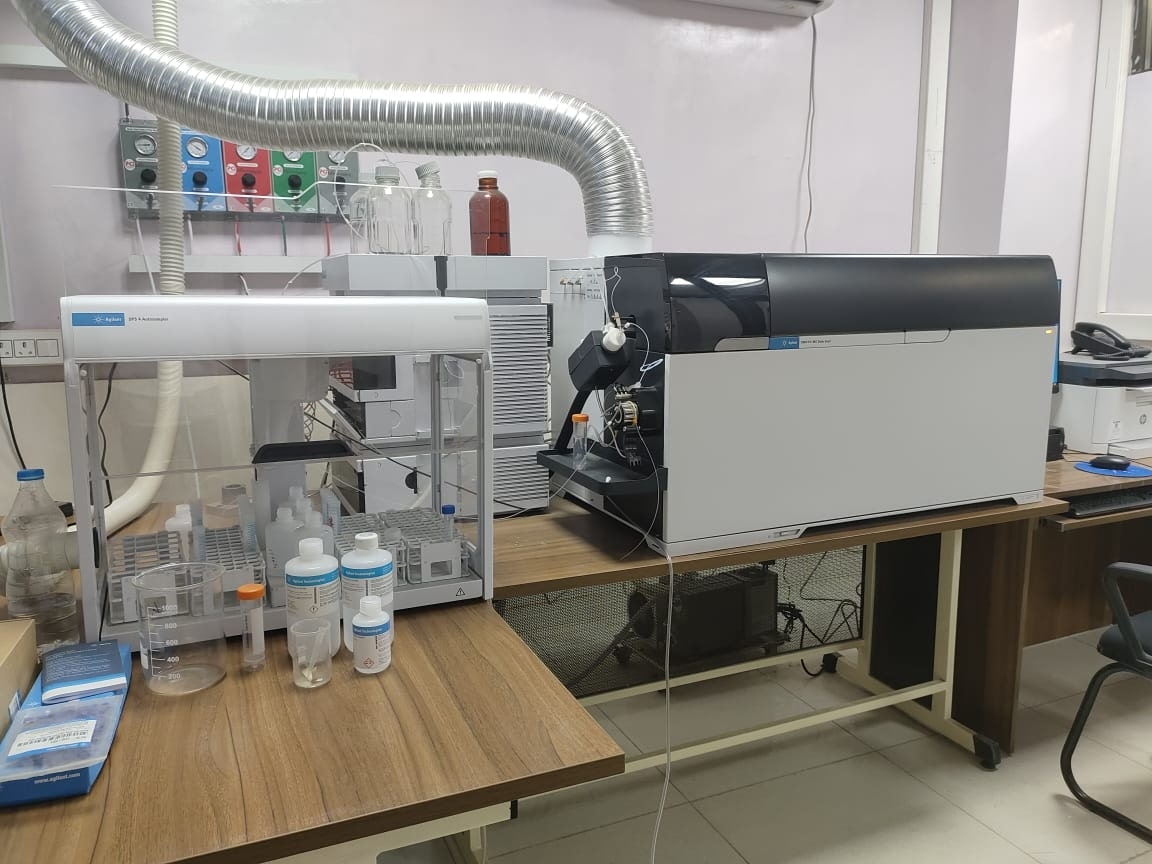The Agilent 8900 ICP-MS/MS (Inductively Coupled Plasma Mass Spectrometer/Mass Spectrometer) is known for its advanced features and specifications, making it a powerful tool for elemental analysis. Here are the key specifications of the Agilent 8900 Series:
Agilent 8900 Series Specifications:
General Specifications:
- Model: Agilent 8900 ICP-MS/MS
- Technology: Triple Quadrupole ICP-MS (ICP-MS/MS)
- Configuration: Quadrupole - Octopole Reaction System (ORS3) - Quadrupole
Sensitivity:
- Low Mass (Li): > 1,000,000 cps/ppb
- Mid Mass (Y): > 1,500,000 cps/ppb
- High Mass (Tl): > 3,000,000 cps/ppb
Detection Limits:
- Single Quadrupole Mode: ppt to sub-ppt range for most elements
- MS/MS Mode: ppt range or lower for challenging elements
Dynamic Range:
- Linear Dynamic Range: Up to 11 orders of magnitude
Mass Range:
Resolution:
- Unit Mass Resolution: 0.7 amu (adjustable)
Interference Removal:
- Collision/Reaction Cell (CRC): ORS3 with He, H2, O2, NH3, and other gases
- Interference Reduction: Efficient removal of polyatomic and matrix interferences
Sample Introduction System:
- Nebulizer: MicroMist or equivalent
- Spray Chamber: Quartz or PFA cyclonic spray chamber
- Torch: One-piece, quartz torch with shield plate
- Peristaltic Pump: 10-roller pump with 3 channels
Plasma and Ion Source:
- RF Power: 500 to 1600 W (adjustable in 1 W increments)
- Plasma Gas Flow Rate: 8 to 20 L/min (adjustable)
- Auxiliary Gas Flow Rate: 0 to 2 L/min (adjustable)
- Nebulizer Gas Flow Rate: 0 to 1 L/min (adjustable)
Detector:
- Detector Type: Discrete dynode electron multiplier
- Detector Modes: Pulse counting, analog, and time-resolved analysis
Data System:
- Software: Agilent MassHunter Workstation software
- Operating System: Windows-based
Other Specifications:
- Vacuum System: Dual-stage rotary and turbo molecular pumps
- Dimensions (W x D x H): 1000 x 700 x 900 mm (approx.)
- Weight: 150 kg (approx.)
These specifications highlight the advanced capabilities of the Agilent 8900 Series ICP-MS/MS, making it an ideal instrument for high-sensitivity and high-accuracy elemental analysis across various applications and industries.
The Agilent 8900 Series ICP-MS/MS (Inductively Coupled Plasma Mass Spectrometry/Mass Spectrometry) offers extensive research potential across a variety of scientific disciplines due to its high sensitivity, precision, and versatility. Here are some areas of research where the Agilent 8900 can make a significant impact:
Environmental Science
- Trace Metal Analysis: The Agilent 8900 can detect and quantify trace metals in environmental samples (water, soil, air) at extremely low concentrations, which is crucial for monitoring pollution and studying biogeochemical cycles.
- Speciation Studies: Understanding the chemical forms of elements, such as different oxidation states or organic/inorganic species, helps in assessing their mobility, bioavailability, and toxicity.
Biomedical and Clinical Research
- Bioimaging and Metallomics: The high sensitivity and specificity of the 8900 Series facilitate the study of metal distributions in biological tissues, aiding in the understanding of metal-related diseases and biological processes.
- Pharmacokinetics: The instrument can be used to trace metal-based drugs or contrast agents in biological systems, providing valuable data on their distribution, metabolism, and excretion.
Food Safety and Nutrition
- Contaminant Detection: The Agilent 8900 is capable of detecting toxic elements (e.g., lead, arsenic, cadmium) in food and beverages, ensuring compliance with safety regulations.
- Nutrient Analysis: It can also be used to analyze essential nutrients (e.g., iron, zinc, selenium) in food products, contributing to nutritional studies and food quality control.
Geochemistry and Geology
- Isotope Ratio Analysis: The instrument's precision allows for the study of isotopic variations, providing insights into geological processes and the origin and age of rocks and minerals.
- Rare Earth Element (REE) Analysis: The 8900 Series can accurately measure REEs in geological samples, which is important for understanding geochemical behavior and resource exploration.
Material Science
- Nanoparticle Characterization: The instrument can be used to study the composition, size distribution, and concentration of nanoparticles in various materials, contributing to the development of advanced materials.
- Surface Analysis: By analyzing surface contaminants or coatings, researchers can gain insights into material properties and performance.
Forensic Science
- Toxicology: The Agilent 8900 can detect and quantify toxic elements in biological samples (e.g., hair, blood, urine), aiding in forensic investigations and toxicological studies.
- Trace Evidence Analysis: It can analyze trace elements in forensic samples (e.g., glass, gunshot residue), providing valuable evidence for criminal investigations.
Industrial Applications
- Quality Control: In industries such as electronics, pharmaceuticals, and metallurgy, the Agilent 8900 can be used for quality control by detecting trace impurities and ensuring product purity.
- Process Monitoring: Continuous monitoring of elemental concentrations in industrial processes helps in optimizing production and ensuring compliance with environmental regulations.
Advancements in Analytical Techniques
- Method Development: Researchers can develop and refine analytical methods using the Agilent 8900, pushing the boundaries of what is possible in elemental analysis.
- Interference Removal: The instrument's advanced collision/reaction cell technology allows for the study of complex matrices by effectively removing interferences, leading to more accurate and reliable results.
Interdisciplinary Research
- Environmental Health: Combining environmental and biomedical research to study the impact of environmental contaminants on human health.
- Archaeometry: Applying elemental analysis to archaeological artifacts to understand historical human activities, trade routes, and material sources.
The Agilent 8900 Series ICP-MS/MS, with its advanced capabilities and high performance, is a valuable tool for researchers across various fields, enabling groundbreaking discoveries and contributing to scientific advancement.

